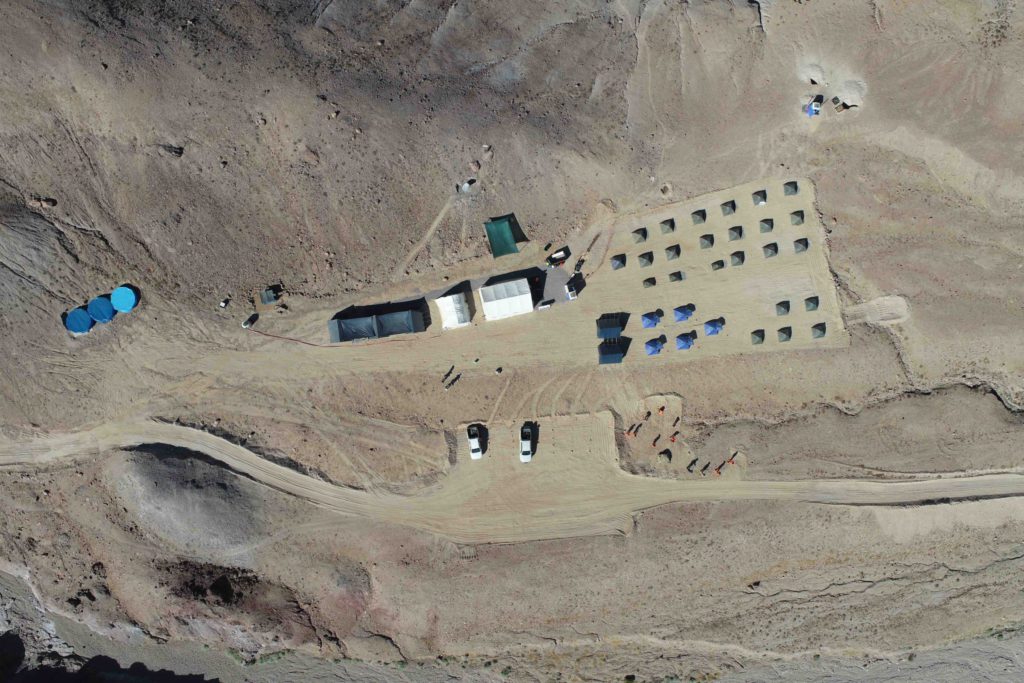JV Article: Tier One Silver hits bonanza-grade silver in first drill program at Curibaya in Peru


Canadian explorer Tier One Silver (TSXV: TSLVF; US-OTC: TSLVF) believes it is in the early stages of a new discovery in Peru.
The Vancouver-headquartered junior recently completed the first ever drill program on its 100%-owned Curibaya silver-gold project in southwest Peru, about 48 km northeast of the provincial capital Tacna, close to the border with Chile.
The drilling comprised 16 holes (5,347 metres) and intercepted bonanza-grade silver mineralization. Highlights included drillhole 21CUR016, which intersected seven metres grading 272.3 grams silver per tonne, 0.33 g/t gold, 0.046% zinc, and 0.03% lead (299.1 g/t silver-equivalent) from 139 metres downhole, including a higher grade core of 1.5 metres of 1,128.7 g/t silver, 1.04 g/t gold, 0.15% zinc, and 0.09% lead (1,213.7 g/t silver-equivalent).
Peter Dembicki, Tier One Silver’s CEO, says that Curibaya “hosts a major intermediate sulphidation epithermal system that lies on the border between an epithermal belt and a world-class, prolific coastal porphyry belt. The drill results indicate that the project has the potential to host both a large-scale, high-grade silver deposit and porphyry deposit.”
The 16,800-hectare property sits near some of South America’s largest porphyry deposits. These include Southern Copper’s (NYSE: SCCO) Toquepala and Cuajone deposits, approximately 42 km and 68 km north of Curibaya, respectively; the Quellaveco deposit, owned by Anglo American (LSE: AAL; US-OTC: AAUK), about 57 km to the north; and Freeport-McMoran’s (NYSE: FCX) Cerro Verde, 175 km north.
In 2020, Tier One Silver conducted a 450-line-km airborne magnetic survey and a 30-line-km ground-based induced polarization survey of Curibaya. The surveys identified a 2-km by 750-metre chargeability anomaly near surface, which it believes is a precious metals target, and a magnetic anomaly below the chargeability anomaly, which it believes is the intrusion responsible for the gold and silver mineralization at surface.

Mineralization at Curibaya occurs at the dome complex at the centre of the property and several structural corridors (Tipal, Sama, Madre, Sambalay, Cambyaya I, and Cambaya II) over a 4-km by 5-km alteration system. The Incapuquio fault, located north of the property, has been interpreted as one of the fundamental controls for both epithermal and porphyry styles of mineralization within the region.
Tier One Silver plans to re-start drilling on the property in May, following the end of the rainy season. The drilling will focus on targets higher in elevation in the system at Sambalay, Tipal, and Cambaya.
“The second phase of drilling is going to be very exciting for us,” said Christian Rios, the company’s senior vice-president of exploration. “We will be able to drill the high priority Cambaya target area, where we’ve seen the best channel samples to date, and continue to explore targets along the mineralized corridors to further increase our confidence that Curibaya could deliver a significant discovery.”
Rios was the vice president of exploration with Bear Creek Mining (TSXV: BCM; US-OTC: BCEFK) from 2001 to 2014 and was involved with three silver discoveries in Peru, including the world-class Santa Ana and Corani silver-lead-zinc deposits.
Tier One Silver is also progressing its Hurricane silver project, which hosts numerous high-grade silver occurrences, about 66 km north of the city of Cusco.
In December, the company completed a channel sampling program on the project and focused on testing partially exposed silver-base metal vein corridors. Highlights included 21HRT-13, which returned 605 g/t silver per tonne, 0.26% copper, 0.21% zinc, and 5.79% lead (860.4 g/t silver-equivalent) from 2 metres.
Dembicki says that Hurricane Silver “offers the potential to make a second world-class discovery in Peru.”
The preceding Joint Venture Article is PROMOTED CONTENT sponsored by TIER ONE SILVER and produced in co-operation with The Northern Miner. Visit www.tieronesilver.com for more information.
Comments